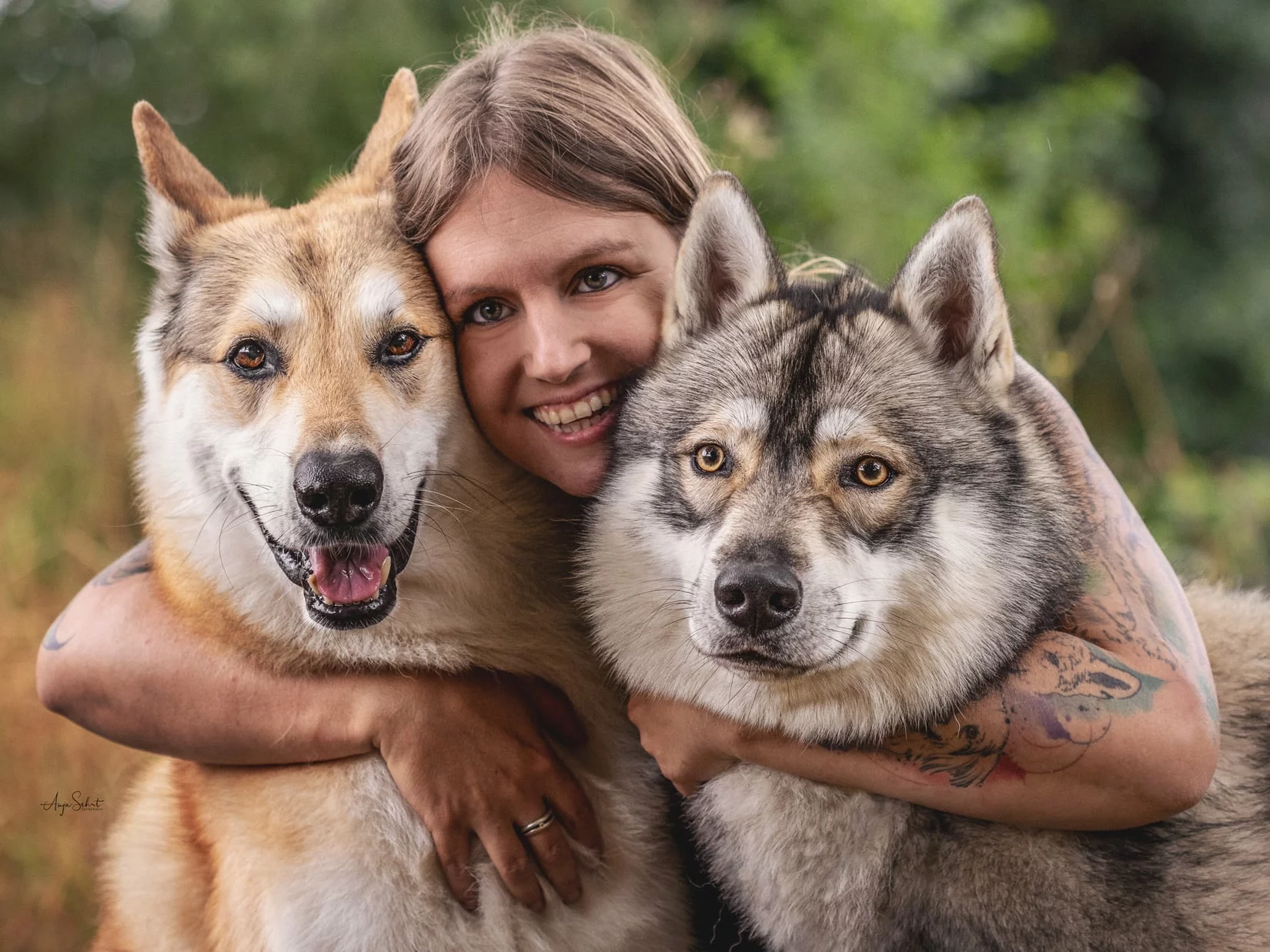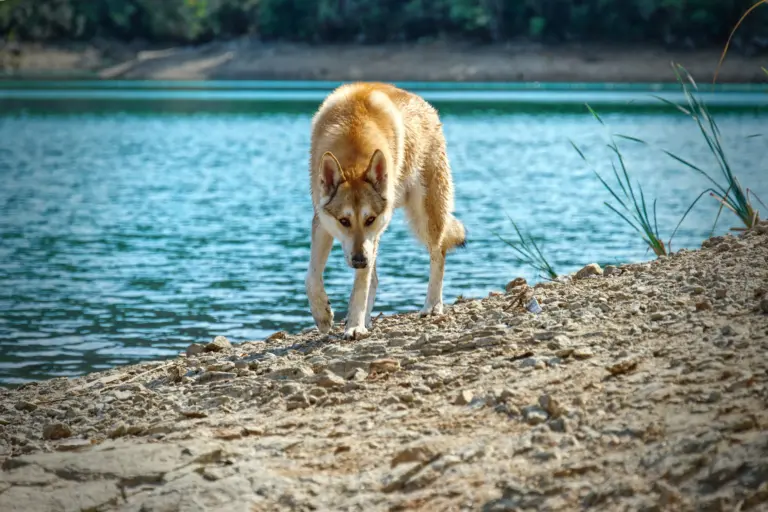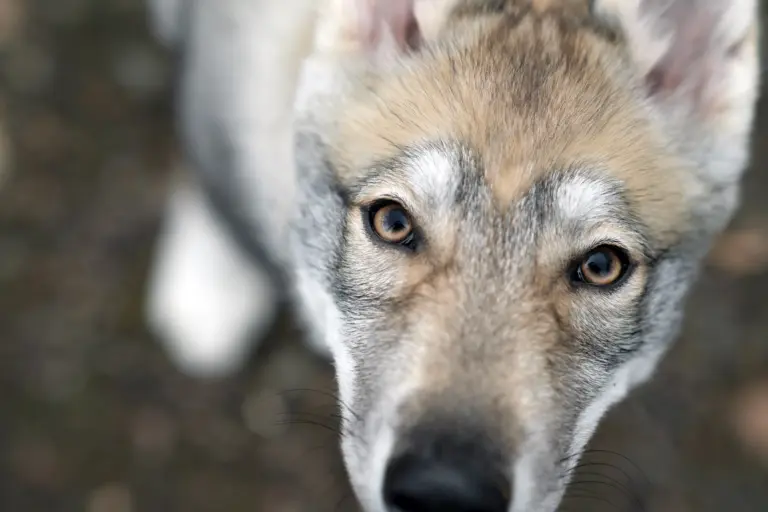The coat colour of the (wolf)dog is a fascinating but also complex topic.
While we already know a lot about the genetic markers that determine the coat colours of our dogs, there are still some mysteries to solve.
Sometimes we come across dogs with coat colours that cannot be fully explained by the known genetic rules.
Why do some animals show a colour that is not covered by the previous genetic tests?
The answer to this question could lie in various genetic phenomena
– from epistasis, in which one gene influences the effect of another, to modifier genes,
which subtly but effectively intervene in other alleles, to the as-yet incompletely researched aspects of research.
In this article, we will look at a few cases with unknown colour genetics, including example images and links to the Embark results.
Ay – actually sand-coloured, but sometimes white:
The ay allele is usually responsible for a sand-coloured or light brown coat colour.
However, in some Wolfdogs and primitive-type dogs, the ay allele can result in a pure white coat colour. Sometimes it is linked to the intensity locus, but not always.
This suggests that there may be other genetic factors that influence the effect of the ay allele.
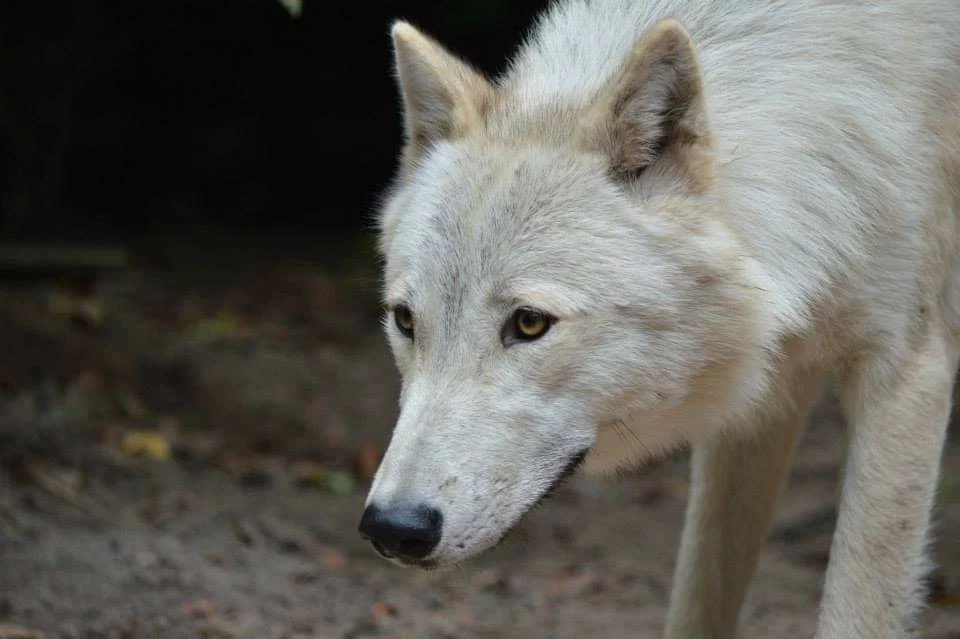
Aw – sometimes not wolf coloured:
The Aw allele can produce a wide range of visual appearances and is not limited to the typical wolf grey colouring.
In fact, in some dogs it can even lead to a colouring that resembles Black & Tan or Sable.
In recent research, several other alleles have been discovered at the A locus,
further increasing the complexity and variety of possible colours.
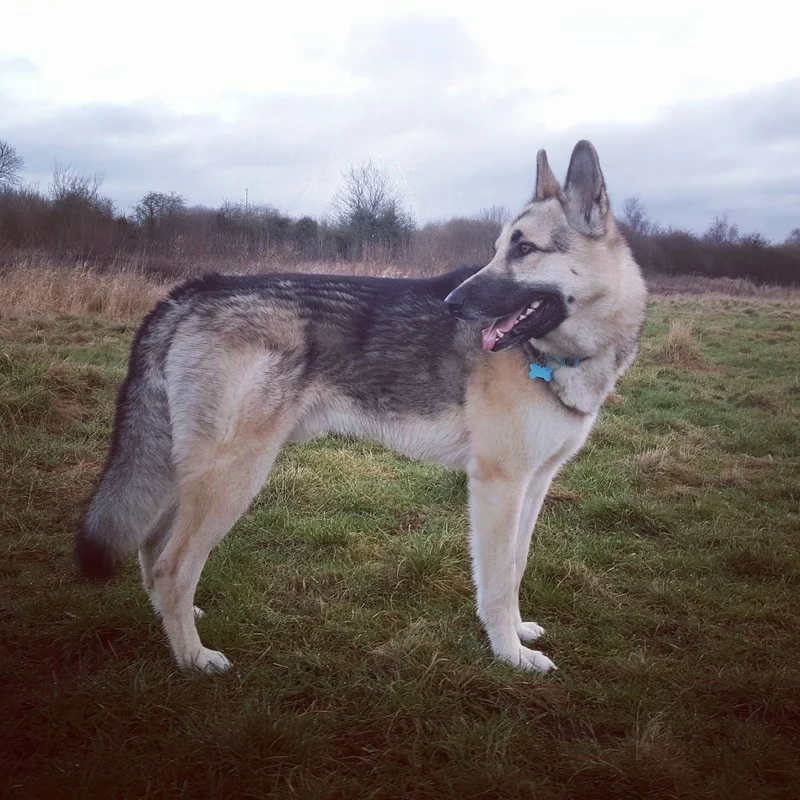
At – not yet fully understood:
The at allele is usually responsible for black and tan patterns.
In the case of Wolfdogs, however, the genotype at/at can often show a phenotype
that resembles the agouti pattern.
The A locus has not yet been fully understood and it is assumed
that the allele recognised as at is another aw type.
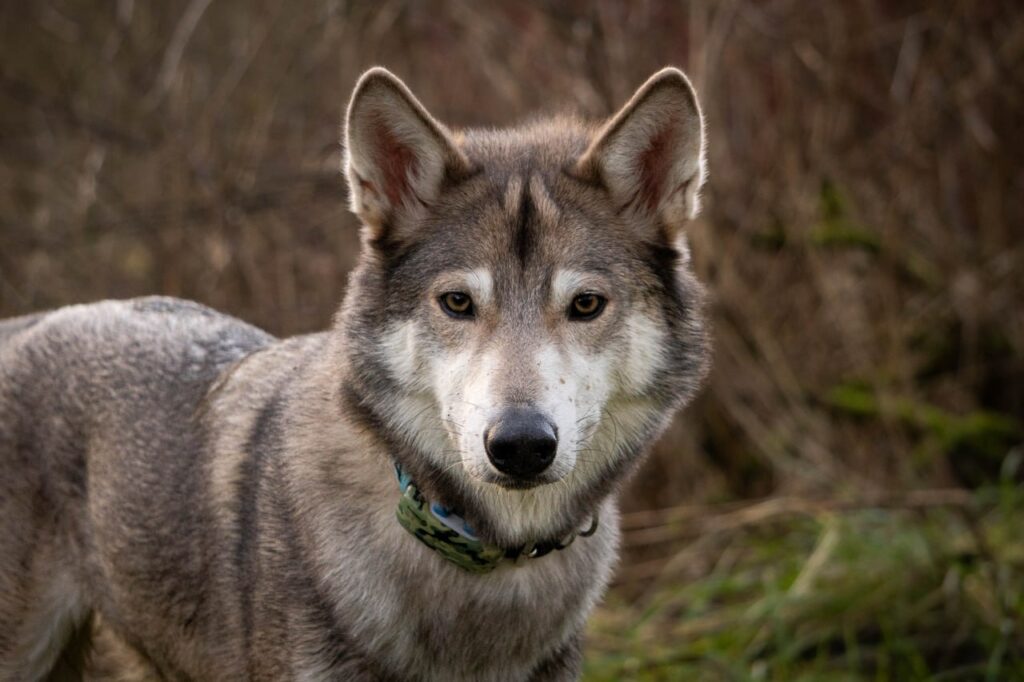
Spotting or no spotting:
The piebald phenotype, in which dogs have white spots in their fur, is caused by a faulty gene called MITF. This gene produces a protein that acts as a kind of switch for other genes. This ‘switch protein’, also called a transcription factor, controls how pigment cells (the cells that colour the fur) survive and distribute themselves in the body. When these pigment cells are missing, white spots appear in the fur.
The piebald pattern is a good example of how several small genetic changes, called mutations, can accumulate and work together to impair the function of the MITF gene. The more such mutations there are, the more white spots appear because the pigment cells cannot survive or migrate properly.
Many wolves and Nordic dog breeds carry one of these special mutations, known as a SINE insertion. That is why commercial DNA tests often show ‘sp/sp’ for them, which stands for Piebald, even if these dogs have no white spots. The reason for this is that these dogs probably do not have the other necessary mutations that are responsible for the appearance of the Piebald pattern. The SINE insertion alone is not enough to express the piebald pattern.
It is important to know that many DNA tests only look for this one SINE insertion. In Siberian Huskies, this mutation is present in about 70% of cases, but it is not solely responsible for the piebald pattern. This means that all huskies that are piebald are sp/sp, but not all huskies that are sp/sp actually have white spots in their fur.
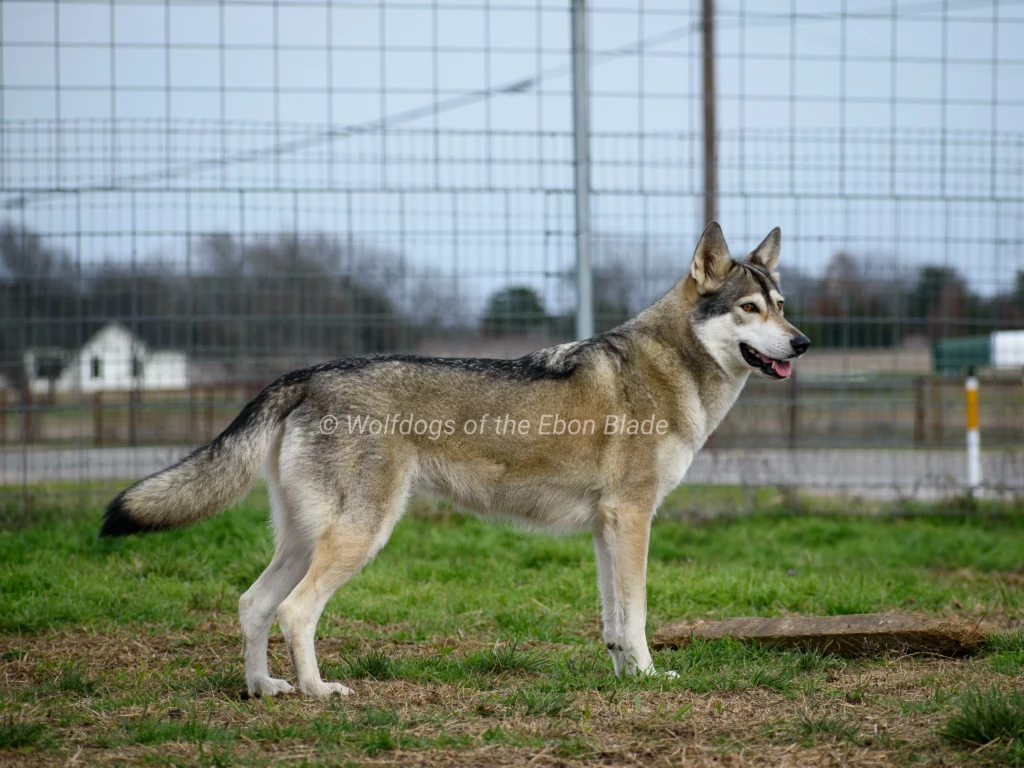
RALY – Does my dog have a saddle or not?
The RALY gene has yielded interesting findings in research, particularly regarding the saddle pattern in dogs. It has been determined that the saddle pattern is located on the A-locus. Nevertheless, the result of the RALY gene should not be ignored. Dogs with the genotype NN have the typical saddle pattern in most cases, NI are carriers of the saddle pattern but also sometimes show it, and II have no saddle pattern. However, these results should be considered with caution, as other genetic markers may also play a role.
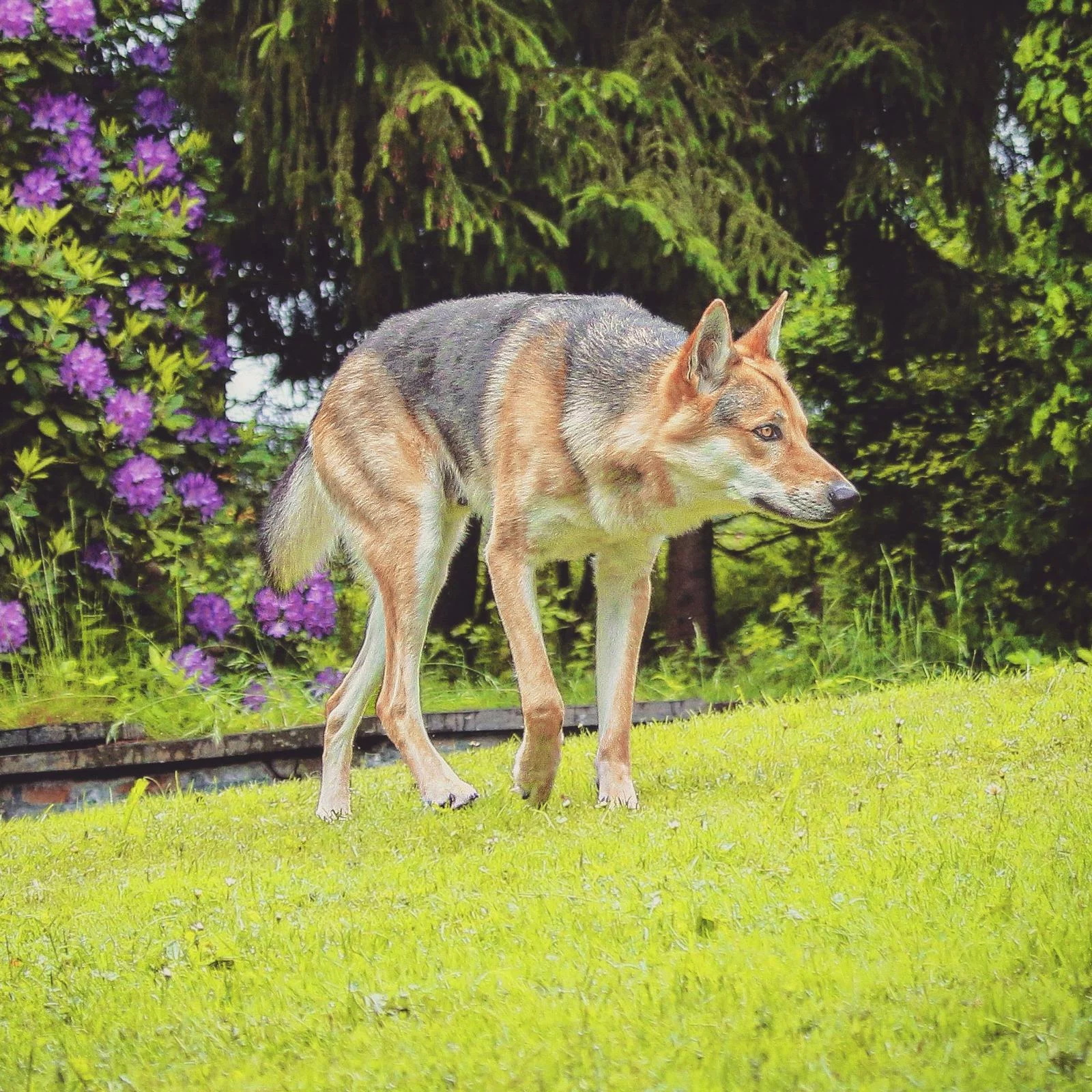
Does your dog’s genetics match its appearance?
If your dog’s coat colour or pattern does not match genetic expectations, share your experience with us!
We are excited to see your results and to learn more about these interesting genetic questions together!


